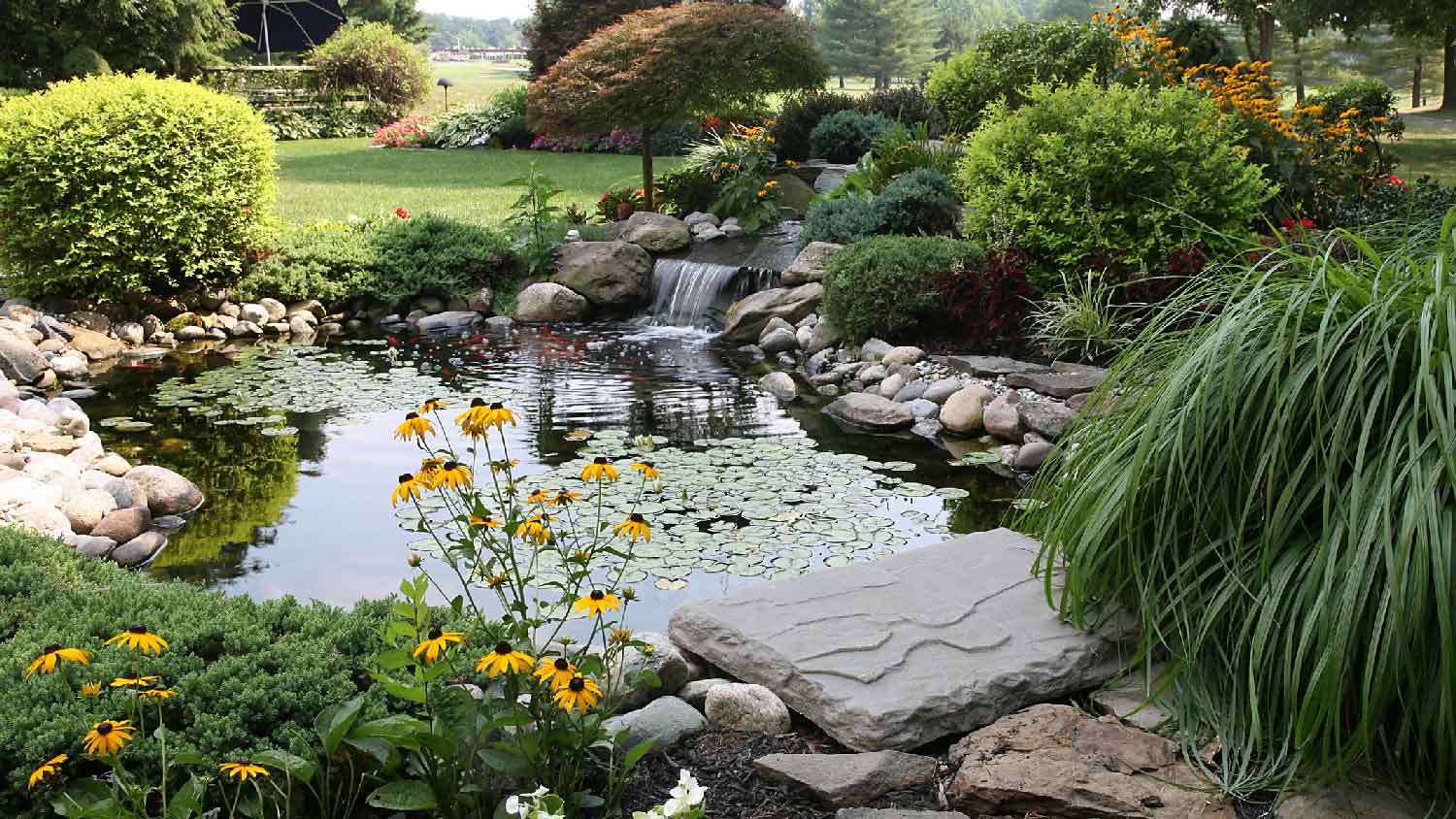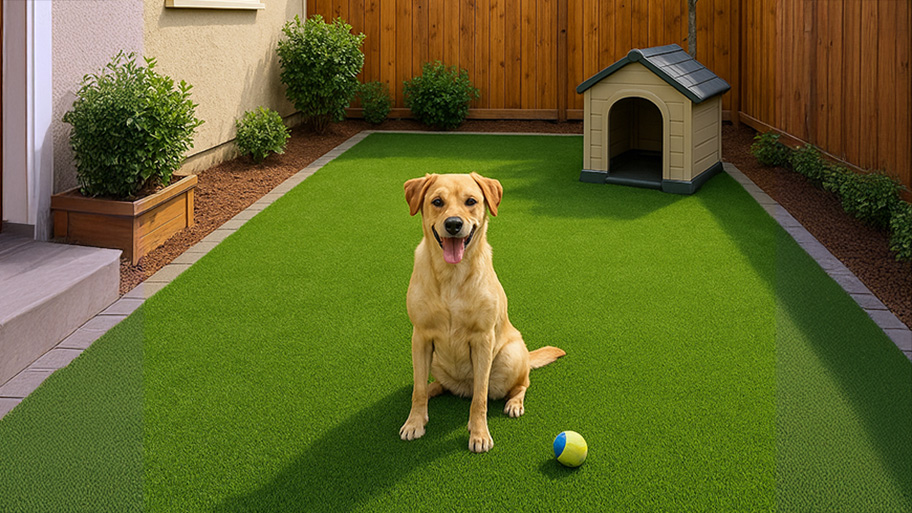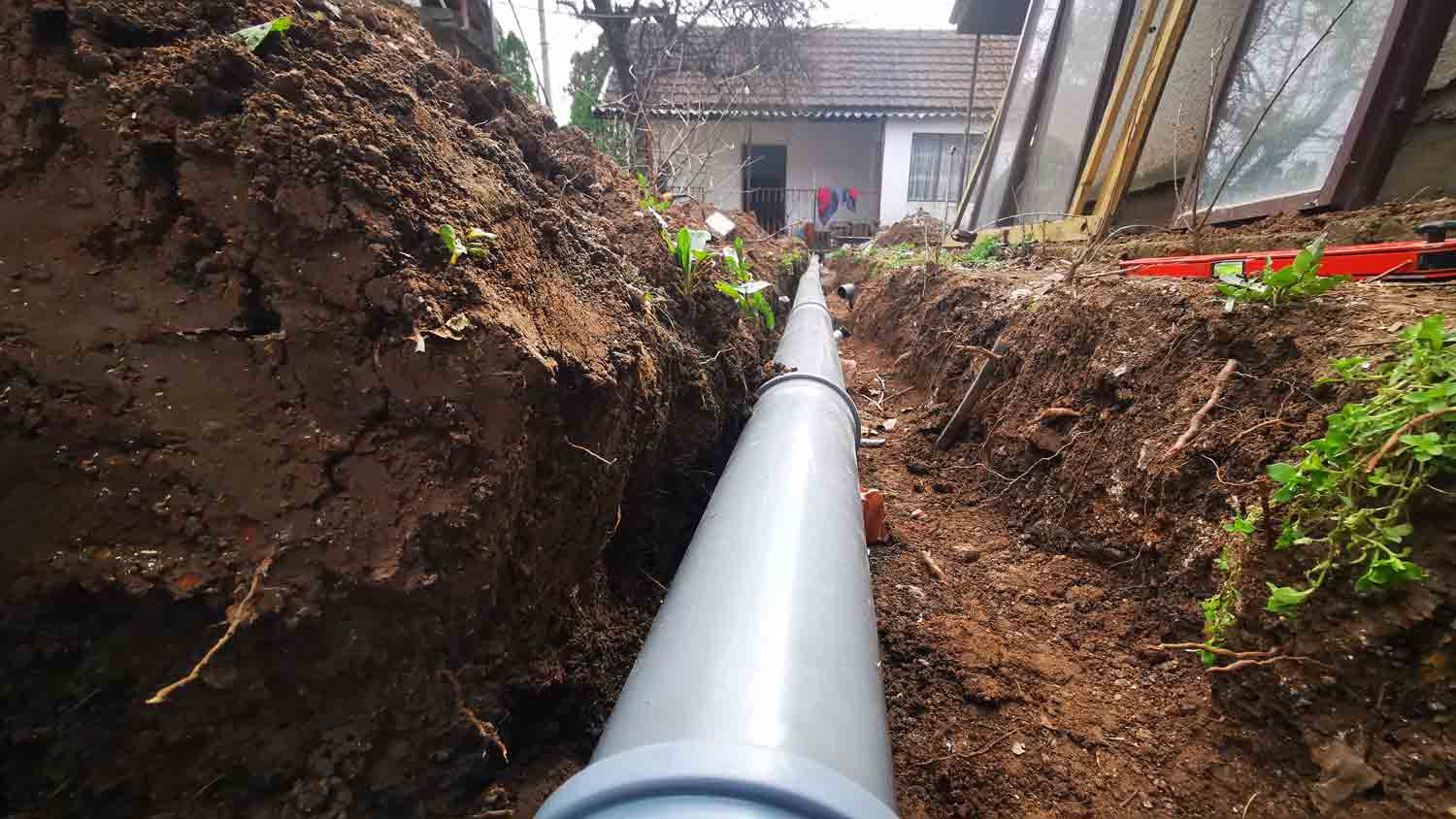
What are average sod installation prices? Learn how much sod costs based on factors like square footage, land prep, land condition, and more.
You’ll love lounging on your patio even more after giving your cushions a refresh


It’s no secret that outdoor seating areas have become an extension of our indoor living spaces. Comfy patio furniture, outdoor dining tables, and plush weatherproof pillows help to bring the comforts of home outside.
Unfortunately, extended exposure to the elements can leave your patio cushions worse for wear. Let’s take a look at how to clean outdoor cushions, remove stains, and protect them from future damage.
Although outdoor patio cushions are more resistant to the elements than indoor upholstered furniture, they aren’t impervious. Prolonged exposure to moisture can cause mold and mildew to develop, and stains are likely to occur from a whole host of factors that will never occur inside—like bird droppings, grass stains, and greasy mishaps from your most recent backyard barbecue. That’s why it’s essential to clean your cushions regularly to prevent the spread of bacteria or stains.
The cost for professional upholstery cleanings ranges from $120 to $230 on average, depending on the number of cushions and their condition. You’ll generally pay more to have highly soiled cushions cleaned because of the increased labor and materials involved. Cleaning extras, like tough stain removal and protective treatments, will add about $20 to $30 each to your final bill.
Take a good, long look at your patio cushions before cleaning them. There are a handful of signs that it’s time to wash them, including noticeable color changes, visible mold, strange odors, and dark, greasy, or sticky stains. Once you’ve determined that, yes, your cushions need a deep clean, here are some steps you can take to ensure the process is successful.
Just like when it comes to washing your clothes or cleaning the area rug that sits in your family room, it's important to follow the care instructions listed on the tag. Check your patio cushions to see if the tag mentions any directions—like what type of cleaning agents to use or if you should avoid submerging your cushions underwater.
While ignoring the rules is unlikely to be as disastrous as it would be for that cashmere sweater you shrank in the dryer, they could still wreak havoc on your cushions and cause unsightly damage.
Always spot-clean your cushions with your cleaning agent before getting started. Test an inconspicuous spot to ensure your cleaner is color-safe and won't damage or discolor your cushions. The preparation stage is also a good time to look for rips or tears and stitch them up.
Round up everything you need to effectively clean your patio cushions before getting started. Although different stains require different solutions, these are the tools and materials that might be necessary.
Tools:
Scrub brush
Hose
Bucket
Microfiber cloth
Vacuum
Putty knife
Pressure washer (optional)
Materials:
Dish soap
Laundry detergent (dry or liquid)
Borax
Bleach
Enzyme cleaner
Nail polish
Hand sanitizer
You should clean cushions on a dry surface to prevent additional moisture absorption or staining. In general, your deck, driveway, or patio are ideal locations for cleaning outdoor cushions. Make sure the area is completely clear, and plan deep cleaning sessions for sunny days to ensure cushion covers dry as quickly as possible.

There are several ways to clean patio cushions, and which one you choose depends on a variety of factors, like if the cushion covers are machine washable and removable.
If the care instructions on the tag indicate that your cushion covers are machine washable, this method is the easiest and best way to make them look great again.
Start by removing cushion cases.
Use a vacuum with a fabric attachment or nozzle to vacuum debris and dust.
Spot treat stains based on stain type.
Machine wash according to the tag's directions. Avoid using any detergents with ingredients that aren’t recommended, like those with bleach.
Let them air dry completely.
If your cushion covers aren’t washing machine-safe, you’ll have to clean them the old-fashioned way, but you won’t regret the arm workout when you see just how great your patio cushions look.
Buy a cleaning solution or make your own with a tablespoon of dish soap and a bucket of warm water. Combine those two ingredients.
Remove the cushion covers.
Vacuum the covers to remove dust and debris.
Use a hose to spray a light coating of water all over your cushion covers, or dunk them once or twice in a bucket until they’re completely damp, but not soaking wet.
Set cushion cover on a flat surface and use a scrub brush to work cleaning solution into every last nook and cranny.
Let soak for about 15 minutes. Keep rinsing until the cleaning solution is fully removed.
Wring out cushions by hand or wrap the cushion covers in a towel and use it to wring out the remaining moisture.
Hang outdoors or in a well-ventilated space until fully dry.
Although patio cushions are slightly more difficult to clean if you can’t remove the covers, the overall process isn’t much more complicated.
Using a fabric attachment and working one side at a time, vacuum cushions until no dust or debris remains.
Lightly spray or splash the cushions with water until damp. Avoid soaking them.
Use a scrub brush to thoroughly apply a cleaning solution to each side of the cushion.
Let them soak for 15 minutes.
Use a hose or several buckets of water to remove the cleaning solution from cushions. Use your hands to press down on the cushions and squeeze out as much moisture as possible.
Lean the cushions against a wall to dry completely. Remember to clean your outdoor patio furniture on a warm, sunny day because they’re more likely to develop mold or mildew the longer they’re wet.
Using a pressure washer to clean your outdoor cushions will greatly reduce the amount of required scrubbing. If your cushions seem beyond repair, this heavy-duty cleaning option may be the best method to return them to their original state.
Start by thoroughly wetting (but not soaking) your cushions with a hose or several buckets of water.
Load the pressure washer with a cleaning solution and attach the soap nozzle. Review the ins and outs of using a pressure cleaner before getting started.
Put on goggles, boots, gloves, and long sleeves before starting the pressure washer.
Spray the cushions thoroughly and evenly. Be sure to keep the nozzle about four to five inches away from the cushions as you work.
Once the cushions are thoroughly coated with solution, let sit for about 15 minutes.
Attach the rinse nozzle to your pressure cleaner and spray cushions until the cleaning solution is gone.
Squeeze out as much liquid as possible with your hands.
Some stains are tougher to remove than others, especially those that are sticky, greasy, or have a bright pigment (hello, red wine spills!). Here’s how to remove the most common outdoor patio cushion stains.
Scrub stains with a small amount of liquid laundry detergent. If you use dry detergent, combine it with a bit of water to create a thick, spreadable paste.
Coat the stain and surrounding area.
Let it soak for 15 minutes before removing.
Rinse completely and repeat as necessary.
Put on gloves and a mask to protect yourself from borax and bleach.
Combine one cup of borax or bleach with four cups of water for an ideal cleaning solution. If using borax or bleach isn’t suggested for your cushion material, use the same amount of lemon juice or vinegar instead.
Apply the solution with a scrub brush and let it soak for 20 minutes.
Spray cushions with a hose or several buckets of water until no solution remains.
Use your hands to squeeze out excess liquid or wrap it in a towel to wring out.
Lean the cushions against a wall to dry completely.
Use a putty knife or a scrub brush to remove dried-on droppings.
Vacuum up remaining debris.
Use a scrub brush to work an enzyme cleaner into fabric and let soak for 15 minutes.
Rinse to remove cleaner and repeat spot treatment as necessary.
Sprinkle stain with baking soda or cornstarch.
Apply chosen cleaning solution thoroughly and evenly with a scrub brush.
Let the cushions soak for 15 to 30 minutes.
Repeat the process if necessary. Tough stains may need up to three to four rounds of spot treating to remove completely.
Dull your putty knife before using it to ensure that you don’t scratch or rip the cushion’s fabric.
Use the putty knife or scrub brush to remove hardened sap.
Dab the stained area lightly with nail polish remover or hand sanitizer.
Let the cushions sit for several minutes or until the remaining sap is noticeably softer and easier to remove. Repeat this step as necessary.
Use one of the cleaning methods listed above to finish freshening up your outdoor patio cushions.
There are a handful of protective measures that you can take after purchasing and cleaning to keep your cushions looking fresh for longer. Follow these tips for maintaining patio cushions.
Before setting out your new patio cushions for use, spray them with a protective fabric treatment and let dry completely. While this method won’t make them indestructible, it will make them less vulnerable to the elements and easier to clean when the time comes.
Although not the most aesthetic solution, covering your cushions with plastic waterproof cases will practically eliminate the need to clean them.
Consider removing your cushions and storing them in a weatherproof patio furniture storage unit when they’re not in use or when the forecast includes rain. Protecting your patio furniture, including your cushions, will guarantee you get several more summers out of them.
The longer a stain has to sit, the harder it will be to remove. Wipe up spills the moment you notice them, and remove stain causing debris (like tree sap and bird droppings) immediately.
Regularly vacuuming and spot treating your outdoor cushions will reduce the need for frequent deep cleaning sessions. Give your cushions some TLC every one to two weeks. You should also vacuum them when you bring them out of storage for the season.
Due to the relatively low cost of patio cushions, paying a professional upholstery cleaner near you to tackle your messes is not typically necessary. However, if the outdoor cushions are of high sentimental or monetary value, it’s worth hiring a pro to restore them to their original glory.
From average costs to expert advice, get all the answers you need to get your job done.

What are average sod installation prices? Learn how much sod costs based on factors like square footage, land prep, land condition, and more.

Leveling your yard can help with drainage and prevent damage to your home. Learn the cost to level a yard in Columbus, OH, and what factors can affect the price.

Growing plants with a hydroponic gardening water system can be a big investment. To know how much it costs to build a hydroponic garden, consider the system, technology, size, and whether you hire a pro. This guide will help calculate costs.

How big is your pond? Knowing how much water your pond can hold will help you choose the right treatments for it and the proper number of aquatic life.

Wondering how to clean dog urine off artificial grass? Revitalize your turf (even if it's pet-friendly) with this simple seven-step cleaning guide.

Keep your yard from flooding by choosing the right piping and drainage. Learn what type of piping is used for the drainage system in a yard with this guide.